|
In 1906 a new ship called SS Galava was launched from the Workington, England, shipyard of R. Williamson and Sons. The new ship was a steel collier 141.4 feet (43 metres) long and 23.9 feet (7 metres) wide. It had a single boiler powering a two cylinder compound stream engine. The engine turned a single four-bladed propeller. The ship was owned by Jones Brothers Coal Company Limited of Sydney. The ships Lloyd's registration number was 124391.
I do not know anything yet of its history, if you have any information, please contact me. The SS Galava appears to have worked the coastal run from Catherine Hill Bay to Sydney. Catherine Hill Bay is just south of Swansea and north of Norah Head. There a large wharf at Catherine Hill Bay. Ships used to tie up at the end and be loaded with coal that was sent out along a conveyor belt from the mine which is located immediately behind the beach and wharf. The coal mine closed in the early 2000s.
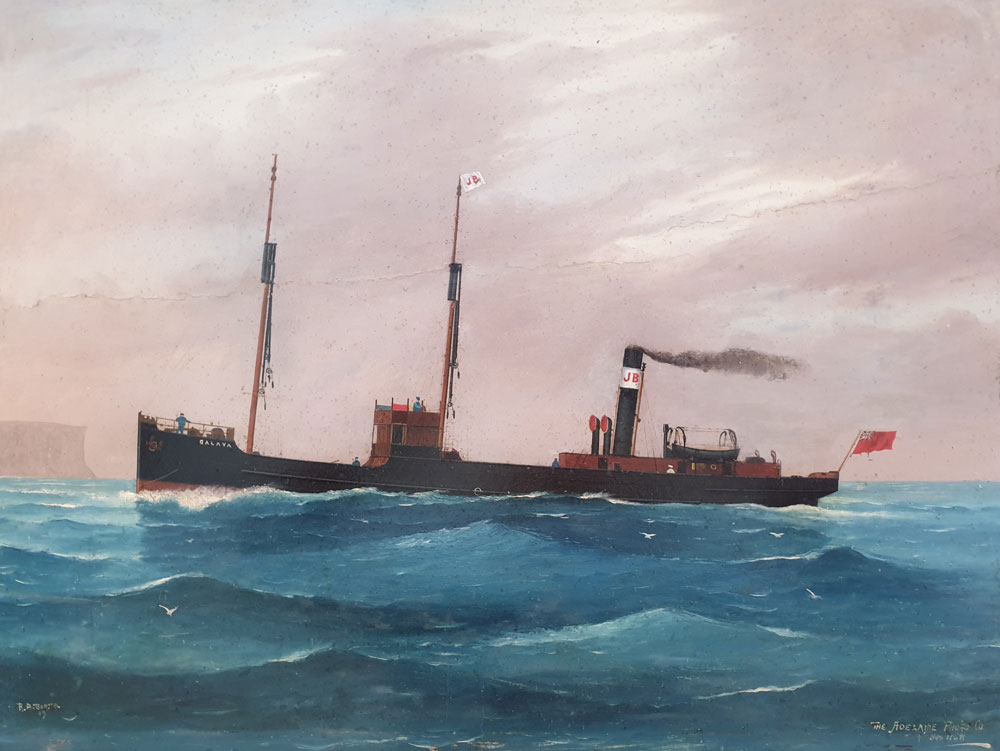 |
| A 1909 painting of the SS Galava by Reginald Arthur Borstel (a famous ship painter). Looks like it is entering Sydney Harbour. - Courtesy of James Jones |
On 22 March 1913 Galava collided with the ketch Alfred Penning off Barrenjoey Headland at the entrance to Broken Bay. The Galava was under the command of Captain Hans Larsen Noste. The Marine Court investigated the collision and found that it was caused by Captain Noste, "either in not keeping a proper lookout and so failing to discover the position of the ketch until a collision was imminent and practically unavoidable, or, if he did see the ketch in good time, as he must have easily and clearly seen her, then in so directing his course as to bring his ship dangerously near to her, he at the time well knowing that with so light an air following her she would barely have steerable way, and so would be only partially controllable".
The court-also found that in leaving the ketch without quite stopping his ship, and without thoroughly satisfying himself that the ketch did not require assistance, he acted very wrongly; showing a disregard both for law and for the dictates of common humanity. The court ordered that the certificate of the master be suspended for
three months, to date from the day of the collision.
On about Tuesday 28 March 1916, it appears that someone may have fallen into one of the Galava's holds and died. More information about this if I find it.
In early 1927 the Galava went into drydock for an overhaul.
At 6:50 pm on 8 February 1927, the Galava started loading coal at Catherine Hill Bay. William Campbell (Second Engineer), reported that he went to bed just after this and believed that the ship left left Catherine Hill Bay just before midnight. However, based on what time the ship sank and the distance from Catherine Hill Bay to its final resting place, it is more likely that the Galava left about 9:30 pm or perhaps 10 pm. I have read that it left at 9:30 pm so perhaps that is the correct time.
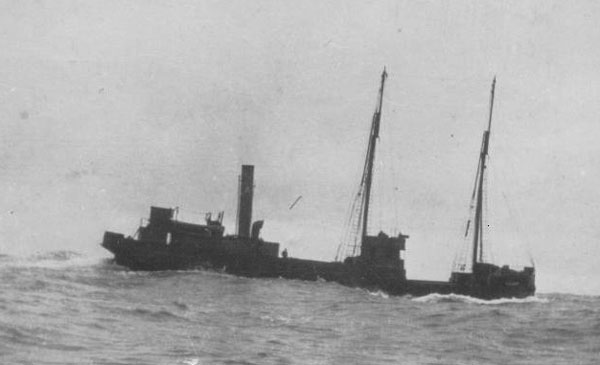 |
| A photograph of the SS Galava |
The SS Galava was under the command of Captain James Charles Pearson with 420 tons of coal aboard for this voyage. It was her third trip since the overhaul and the ship headed south towards Sydney into a moderately strong southerly wind which was causing choppy seas. Less than 40 kilometres into the journey, disaster struck.
At about 1 am on 9 February 1927 the ship was just passing Terrigal on the Central Coast of New South Wales. At this time, water started leaking into the ship with such suddenness that within a few minutes, the ship was doomed. The water appears to have leaked in through the hull plates in the bow of the vessel. The engine room was dry but the holds were full of water when the crew removed the hatch covers to check what was happening.
George Jones (Fireman), reported that he was asleep in his bunk in the forecastle when he felt water lapping at his feet. He and three others who were asleep in the cabin quickly went up on deck.
Captain Pearson reported that he was aroused from his sleep by the Mate saying that the ship had a list to port. He went up on deck and ordered that the ship's whistle blown to alert the crew to the situation and to summons them to the deck. The Captain issued lifebelts and some of the crew had problems putting them on as they did not know what to do (obviously no training done in those days). So quick did the water enter, there was no time to launch the lifeboat or even fire off distress rockets. Captain Pearson stated that "next I know was that we were all in the water".
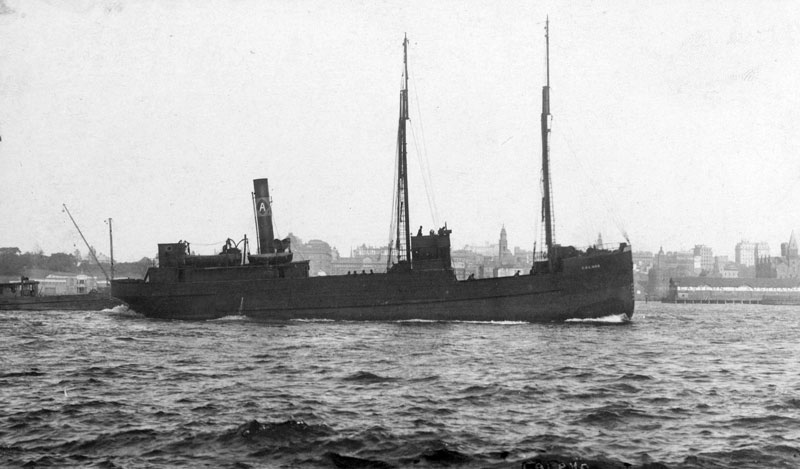 |
| SS Galava in Sydney Harbour |
George Jones reported that he dived from the deck with Antonio Dondero (Fireman), as the ship rolled over. This was about 5.8 kilometres from the nearest land.
It is not clear if all the crew ended up in the water or if some were trapped inside the ship, but it was reported that most dived off the side of the ship but some were drawn under as the ship sank. It was a very dark night and the men in the water could not see each other, only able to hear their shouts.
Jones and Dondero soon found each other and later were joined by Charles Lancaster (Mate), Louis Wilson (Able Seaman) and Campbell. Campbell said that he had found a three foot long piece of wooden grating and he held onto this. Dondero later told the Sydney Morning Herald that he had not swum in salt water in over nine years.
Meanwhile, Captain Pearson had grabbed a hatch that was floating and held onto this. His calls to the crew went unanswered. He reported that during the night he saw a ship pass by at a distance of half a mile. Campbell also reported that he saw the Newcastle steamers pass heading north and south.
It is not clear how soon all the above crew found each other, but Campbell stated that he was with Jones, Dondero and another crewman, Pietro Spagnolo (Able Seaman). John Flak (Chief Engineer) was swept into the water and he reported that he was with Alfred Brown (Able Seaman) soon after the ship sank. Flak saw Brown slip below the surface and disappear about one hour after the sinking.
George Jones was shipwrecked about 10 years earlier when the SS Coraki hit the breakwater of the Clarence River at Maclean. He remained with Lancaster, Wilson, Campbell and Dondero till sunrise when he and Dondero announced that they were going to swim to shore. By coincidence, Dondero was shipwrecked in an almost identical spot 15 years ago when his fishing launch foundered two miles from Terrigal. This was probably in 1912 and I believe that the vessel was a 13.3 metres long 14 ton launch or fishing trawler called Merry Days.
Lancaster, Wilson and Campbell declared that they could not swim to the shore so they stayed where they were. Campbell later changed his mind and also began swimming towards the shore. Just after sunrise, Flak saw Spagnolo die as he lost consciousness and slipped under the water.
There were lots of bluebottles (Portugese Man'o'War) in the water and all the men were getting badly stung. As could be expected, this certainly added to their misery.
Jones and Dondero headed towards the beach north of Terrigal while Campbell headed further south towards Avoca (south of Terrigal). Flak appears to have swum straight towards Terrigal.
While this was all going on, Captain Pearson was also heading towards the shore and at about 9 am he landed on the beach at Womberal. This is reported in the paper as about three miles (4.8 kilometres) from Terrigal but more likely about 3 to 3.5 kilometres according to my maps. Jones and Dondero landed about the same time half a mile from Pearson. This was no mean feat as it is almost seven kilometres to the beach from the site of the sinking. Jones later stated ""Boy" Charlton could not have done the job better". Andrew "Boy" Charlton was one of Australia's greatest distance swimmers. At the 1924 Paris Olympics, he won the 1500 metres freestyle Gold Medal and in the 400 metres, he came third behind the famous Johnny Weissmuller.
They all rested and then walked the three miles to Terrigal. The alarm was raised and fishermen and Police began searching for survivors.
The tug St Olaves, under the command of Captain Boyd, was on her way from Sydney to Newcastle when she started searching. All her crew were on the deck looking and they sighted Campbell about half a mile off the shore south of Terrigal. This was somewhere between 11 am and noon. He was soon pulled about and his first request was for something to eat!
One hour later, the St Olaves spotted John Flak. He was just off the rocks at the Skillion (Terrigal headland). He was floating facedown so L. Boyd, the tug's Fireman, dived in and swam 100 yards to Flak. He dragged him back to the tug and when closer, a line was thrown to him to assist.
Flak was pulled aboard unconscious and not breathing. The crew started giving him artificial respiration for three hours. He finally started breathing more regular but did not regain consciousness.
The St Olaves headed back to Sydney and met the Pilot Vesel SS Captain Cook off Long Reef. The Captain Cook turned around as they would not arrive till after dark, too late to search. The St Olaves arrived in Sydney at 4 pm and Flak was taken to Sydney Hospital where it was reported he was in a serious condition.
The search continued all day the by Police and fishermen. The skipper of the SS Duckenfield (not the one sunk off northern Sydney) reported when he arrived in Newcastle that he had sighted two bodies in the water near Terrigal but due to rough seas, they were unable to safely launch a lifeboat to collect them.
The bodies of Lancaster and Wilson were found and brought to Terrigal Beach. Just as the Coroner arrived to examine their bodies, the Police launch arrived with the body of James Christie (Cook).
Captain Pearson was put up at Wades Grocer's Shop at Terrigal and Dondero and Jones were accommodated at Kurrwyba Boarding House where a collection later raised some money for them.
At 3 pm on 10 February 1927, the body of Jensen Hansen (Able Seaman) was found at Boat Harbour (not sure if this is Bateau Bay or perhaps even The Haven at Terrigal). The same day, John Flak was well enough to be interviewed by the Sydney Morning Herald reporter.
Thus, four crewmen were found dead and another three were missing. I am not sure at this stage if they were ever found. So it appears that five survived the sinking and seven died.
Survivors
Dead
Missing
David Jones of Jones Brothers Coal stated that the vessel was valued at £300. It was insured with United Insurance Company Limited.
Antonio Dondero was an Italian merchant sailor who came to Australia in the late 1800s. His grandson, Tony Ryan (named Anthony after Antonio), advised me that his mother told him many stories of the sinking and that his Grandmother was informed that Antonio had been ship wrecked, but did not know if he was alive or dead until he walked in the front door. This was of course very traumatic for them. Antonio remained a sailor till he retired. He died in 1950 aged 80.
John Flak carried on working on the ships until his retirement. He died in 1967. His father before him had been a master mariner sailing clippers out of Singapore and his son was an engineer in the Royal Australian Navy on HMAS Sydney. One of his many grandsons is an engineer in the Royal Navy.
On Thursday 24 March 1927, the Court of Marine Inquiry found that it was unable to find a cause for the sinking. The Court found that the Master and officers did all they could in the circumstances.
The wreck was known to fishers for a long time. For a lot of this time, there was speculation that the wreck was the missing Japanese mini-submarine (which was finally found off northern Sydney in 2007).
To put pay to the lingering doubts over the identity of the wreck, Les Graham, owner of the Terrigal Dive Centre (then called Terrigal Dive School), put together a group of divers from his operation and the Underwater Research Group of NSW. A local fisher took them out to the wreck.
In an article I have that was written by Les soon after the dive, he states that "in 40 years it would almost have certainly rotted away". This implies that the dive was sometime after 1967. However, as Les did not start the dive operation till 1968, it can probably be assumed that the dive was sometime in 1968 or 1969. Les later confirmed to me that it was either late 1968 or early 1969.
On the dive was Les, Helen and her husband Chuck (both Canadians), Dick (an American) and Dita (Swiss). Upon descending they discovered that it was not the Japanese submarine, but a small coastal vessel. On depth sounders, the wreck had shown up as being huge, extending from about 51 metres up to 15 metres at times. This was caused by the huge schools of yellowtail, teragalin and nannygai that hang over the wreck.
The first thing that they noticed was that the wreck was covered in anchors. When they first dived the wreck, it was relatively intact (see the diagram below). The superstructure was missing, leaving the engine room open.
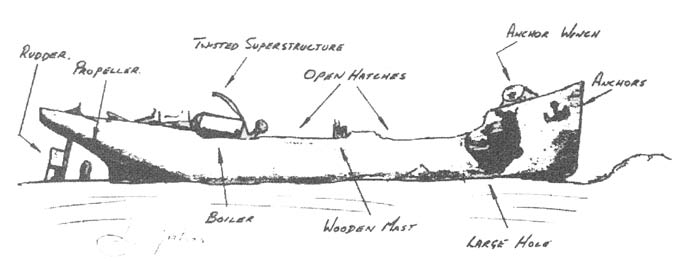 |
A diagram of the wreck of the SS Galava
Drawn by Les Graham in about 1969 - used courtesy of Les Graham |
After the dive, Les had a slight pain in his shoulder so he re-entered the water and did extra decompression. He was certain that the pain had been caused by being wrenched as he climbed back in the boat, but it was better to be safe than sorry.
On the dive a camera housing was accidentally left tied onto the wreck and when they went back a few days later, it was missing. Was it ever found?
Today the wreck is located 5.8 kilometres off The Skillion, Terrigal, almost due east of Avoca. It is about 6.6 kilometres from the boat ramp at The Haven to the wreck site. A GPS Reading of 33° 27.5549' S 151° 30.8008' E (I think using WGS84) will put you near the wreck. In mid-2008 there was a mooring on the wreck but it was a very light line, suitable only for small boats in calm seas. The marks for finding the wreck are Barrenjoey Lighthouse just disappears behind the third point to the south and the water tower at Terrigal is below a small notch in the hill behind (the tower is just right of the centre of the gap north of the Skillion).
The wreck lies facing roughly north-east. This is strange in that the ship was heading south when it sank. Anyway, the water is about 51 metres deep here and the wreck only comes up a few metres at the stern and a metre or so at the bow. It can be a hard wreck to anchor on as there is only sand in the middle of the wreck. There is normally excellent fishlife on the wreck and this makes it easier to located with your depth sounder.
Once anchored, descend to the wreck. Hopefully you will be anchored on the stern. On the starboard side behind the boiler there is a large windlass on the sand and behind here is the prop. The prop is missing its two blades that should be visible (the others may be buried in the sand). Noted wreck expert, John Riley, believes that the blades were blown off, presumably in a misguided attempt to recover what was thought to be a bronze propeller. Note that Les Graham reports that when he dived the wreck that first day, the prop was there as he scraped it with his knife to see what material it was made of. He determined then that it was iron and worthless. The rudder is hard aport, thus explaining how the ship ended up roughly facing back towards its departure point.
Coming around the port side from the stern you will see that the engine is not upright like on some other ships (the SS Undola for example). It lies over on its side, again, possibly as a result of explosives. In front of the engine is the scotch boiler. In the late 1980s this had a large winch sitting between it and the boiler room bulkhead but in 2008 it is located on the starboard side in front of the bulkhead. You can get some nice photographs from in front of the bulkhead.
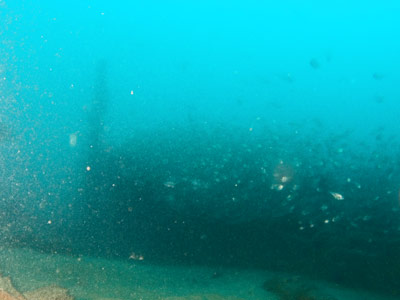 | 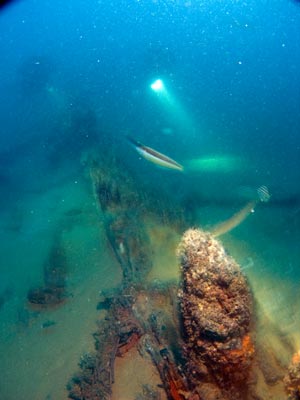 |
| The stern of the ship | The starboard mid section of the wreck
looking towards the stern |
From here, head along the port side. The hull has mostly rusted away, leaving just a series of ribs along each side. As you go you will see that the two holds now appear to be one large hold. The bridge used to be about half way along this section, but now there is no evidence. About 15 metres after leaving the boiler you will come to the bow section. This is a bit more intact and stands up about a metre above the sand. There are a couple of winches here. In good conditions, you should be able to get some good photographs. The bowsprit still stands up high.
After seeing the bow, head back along the starboard side and it is very similar to the port side. Soon you will see the large winch that has moved from in front of the boiler. The boiler is behind and to the right. You will by now probably have spent about 10 to 12 minutes on the wreck. Most people will by now have to start their ascent. If you still have enough air, you could swim back to the stern and then ascend.
The fishlife on the wreck is almost as good as that on the SS Tuggerah in Sydney. There are wobbegongs, nannygais, leatherjackets and seapike. In fact, I had a large wobbegong hit me on the head as it swam towards the boiler.
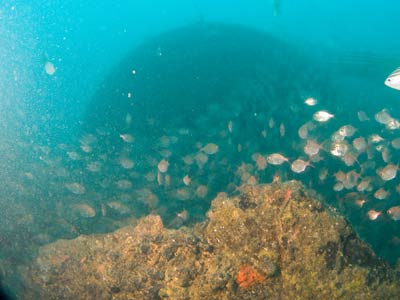 | 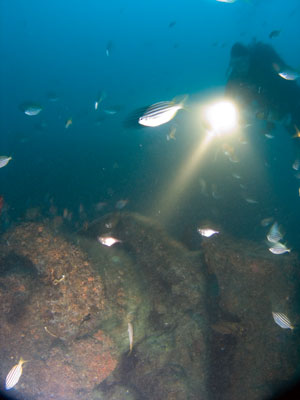 |
| The boiler of the Galava from in front of the bulkhead | Kelly lighting the main winch on the bow |
For 15 minutes, you will need to do about 16 minutes decompression. This will be about 1 minute at 9 metres, 4 minutes at 6 metres and 11 minutes at 3 metres. Your total run time, including an extra stop of five minutes will be about 40 minutes or so.
As can be expected, this is a dive only for the very experienced deep diver. You need to be properly equipped with a minimum of a pony bottle. An excellent shipwreck, with great fishlife as well.
We dived the wreck with Terrigal Dive Centre, owned by Les and Fran Graham for more than 40 years. We had excellent service from Ivan the coxswain and Bryon the shop manager (Les and Fran were away). Thoroughly recommended.
Note:
All photographs taken on a very dark day so quality is not the best.
References:
| 
 v6.00.307 © 2003-2005
v6.00.307 © 2003-2005